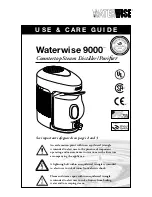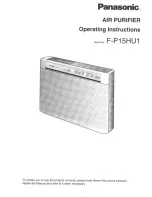
37
Pre-Commissioning
Due to our policy of continuous product innovation, some specifications may change without notification.
©LG Electronics U.S.A., Inc., Englewood Cliffs, NJ. All rights reserved. “LG” is a registered trademark of LG Corp.
PRE-COMMISSIONING
Triple Leak / Pressure Check
Triple Leak / Pressure Check Procedure Steps
1. After the refrigerant piping installation is complete, open the isolation ball valves, if any, that will have been included in the piping system.
2. Verify that all outdoor unit service ports are closed. For multi-frame outdoor units, verify the service valves on all Main and Sub outdoor
units are closed and the stem head access caps are tight. The leak / pressure check is to be performed to only the refrigerant piping sys-
tem and connected DOAS units. Verify that the hot gas line (high pressure vapor), liquid line, and suction (low pressure vapor) line service
ports are closed, and the stem head access caps are tight.
3. Remove the caps on the Schrader ports. Connect the nitrogen cylinder regulator to the gauge manifold, then connect the gauge manifold
to the Schrader ports on the hot gas line (high pressure vapor), liquid line, and suction (low pressure vapor) service ports.
For multi-frame outdoor units, connect the gauge manifold to the Schrader ports on only one outdoor unit, preferably the Sub outdoor unit that is
farthest away from the refrigerant piping system and connected DOAS units.
4. Perform the leak / pressure check at 150 psig for five (5) minutes (standing pressure check).
5. Perform the leak / pressure check at 300 psig for fifteen (15) minutes (standing pressure check).
6. Perform the leak / pressure check at 550 psig for 24 hours to make sure the piping system is leak-free. After the gauge reading reaches
550 psig, isolate the system by first closing the gauge manifold, then close the nitrogen cylinder valve. Check the flared and brazed con-
nections for leaks by applying a bubble solution to all joints.
DANGER
8VLQJFRPEXVWLEOHJDVHVLQFOXGLQJR[\JHQZLOOUHVXOWLQ¿UHRUH[SORVLRQDQGUHVXOWLQVHYHUHSHUVRQDOLQMXU\RUGHDWK8VHLQHUWJDVPHGLFDOJUDGH
dry nitrogen) when checking leaks, cleaning, installing/repairing pipes, etc. The use of an 800 psig or higher nitrogen regulator is required for safety.
6SOLW&RPSDFW'2$6XQLWVFDQRQO\EHLQVWDOOHGRQ0XOWL9RXWGRRUXQLWV\VWHPVGHVLJQHGIRUKHDWUHFRYHU\RSHUDWLRQ
•
Do not apply power to the units
EHIRUHSHUIRUPLQJDV\VWHPOHDNWHVW7KHUHLVDSRVVLELOLW\WKDWWKH((9YDOYHVZLOOFORVHDQGLVRODWH
sections of the piping system, making the leak test inconclusive. Contact your LG Applied Rep or service technician for the procedure to
UHRSHQWKH((9YDOYHVEHIRUHWKHOHDNWHVW
21/<
if the power has been applied.
• For multi-frame outdoor units, connect the nitrogen cylinder regulator to the gauge manifold, then connect the gauge manifold to the
Schrader port on the service port of only one outdoor unit, preferably the Sub outdoor unit that is farthest away from the refrigerant piping
system and connected indoor units / heat recovery units.
•
Never perform the leak test using refrigerant.
•
To avoid nitrogen entering the refrigerant system in a liquid state, the top of the cylinder must be higher than its bottom (used in a verti-
cal standing position) when the system is pressurized.
• Use only a leak-free gauge manifold set.
7ULSOH/HDN3UHVVXUH&KHFN
After the refrigerant piping installation is complete, perform a triple leak / pressure test to check for leaks at any joints or connections within
the piping system.
















































